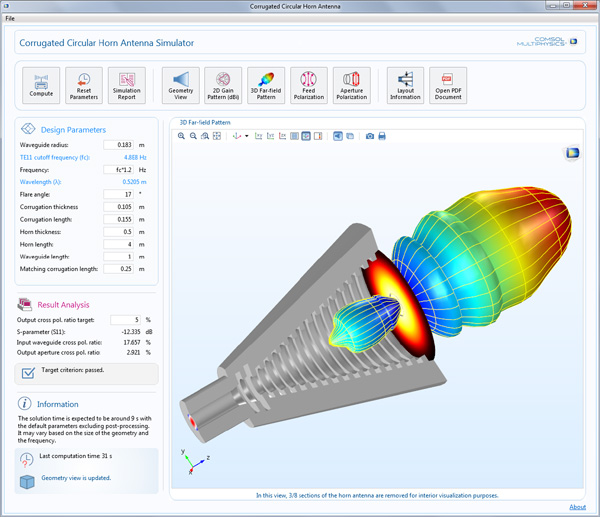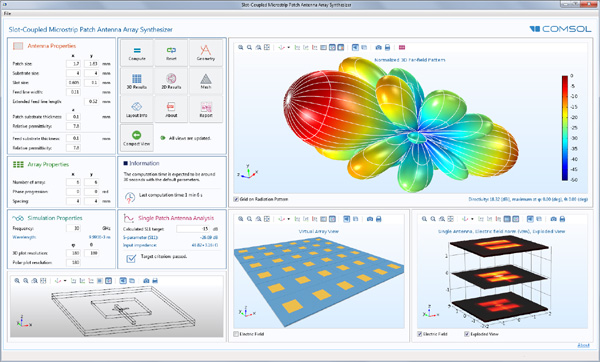I just visited Comsol’s annual COMSOL Conference 2015 Boston where Simulation for EveryoneTM is their trademarked expression. The pre-release of COMSOL Multiphysics® version 5.2 was the focus as it fosters collaboration within organizations by providing simulation specialists the tools to share their simulation work from design and development, to production and testing. They seem to be the only one offering a fully integrated environment for creating simulation apps which is a smart way to offer services since most new engineers are growing up on apps as the way to do everything. The app approach creates a whole community of experts to create apps that others can use who do not have the expertise to set them up. I expect this to really take off next year as version 5.2 stabilizes and matures the functionality and server software.
Comsol was demonstrating productivity updates to COMSOL Multiphysics and COMSOL Server with new features, improved stability and robustness, and faster execution. Version 5.2 offers a more intuitive and improved user experience for building multiphysics models and converting them into simulation apps. Major upgrades to the Application Builder include the new Editor Tools for easy creation of user interface components, commands for dynamic updates of graphics, and more control over the deployment of simulation apps. In version 5.2 running simulation apps using the COMSOL Server™ software in a corporate network or in the cloud is now up to five times faster. Many updates, new features and demo apps are also available for the add-on products in electrical, mechanical, fluid, and chemical areas.
Among the new user-inspired features is the possibility to update graphics while running an app. The app designer can now present app users with different plots while solving, which takes them through the progression of the solution process presenting them, for example, with geometry, mesh, and solution plots. The app designer can now also customize the graphics toolbar with new buttons and include camera movements.
The Application Builder allows companies to communicate across multiple departments, knowing that the simulation expert is able to maintain control, enforce quality standards, and ensure that the results can be trusted. To demonstrate the power of the Application Builder, about 50 new apps have been added to the Application Libraries showcasing the capabilities of the Application Builder. The Application Libraries include several examples ranging from membrane dialysis to water treatment, thermoelectric cooling to heat exchangers, touchscreen design to magnetic prospecting, piezoacoustic transducer to muffler design, MEMS sensor to pressure vessel.
Version 5.2 provides several new core functionality features inspired by feedback from the active COMSOL Multiphysics user community. For example, users can now add annotations to 3D and 2D plots. A new tetrahedral meshing algorithm minimizes the need for manual interactions when meshing large CAD models. Mesh Parts are introduced for integrating STL surface meshes and NASTRAN volumetric meshes into the geometry building work flow. The use of selections is expanded upon and can now be used for singling out which parts of a solution that should be used in results processing and visualizations.
Improvements for Electrical applications include: The AC/DC Module features a new effective nonlinear constitutive relations formulation for approximating nonlinear magnetic materials in the frequency domain is now available. Shared library files can now be used to create magnetic materials that include hysteresis and irreversible effects. Smith plots are now available in the RF Module. And there is a long list of additional improvements to the modules for other applications.
Here are a couple of RF app examples that are available – pretty cool stuff!



